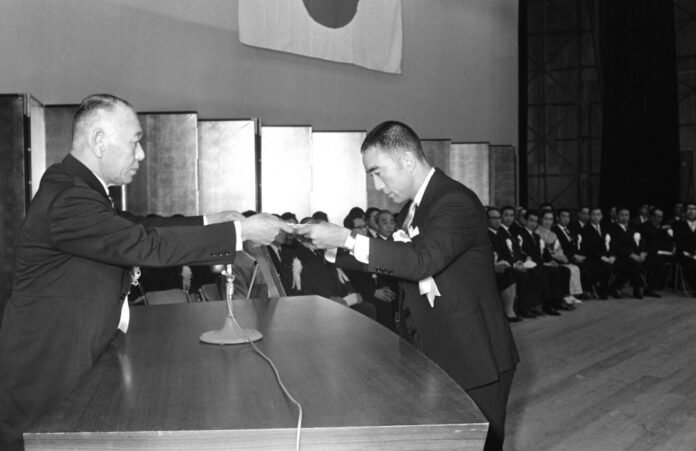Even before 三島由紀夫 (Mishima YukioYukio Mishima) committed 切腹 (seppuku), a ritual samurai suicide ritual in which he disemboweled himself with a katana before being beheaded by his co-conspirators, he had already secured his place in infamy on November 25, 1970.
Earlier that day, Mishima and his organization, 楯の会 (Tatenokai“Shield Society”), had commandeered an office from the Japanese Self-Defense Forces with the intention of arousing the soldiers and staging a coup to restore power to the Emperor.
Mishima’s right-wing politics are controversial to the extreme, but his writing is not – at least in terms of his brilliant prose. When he died at the age of 45, he had written masterpieces including “金閣寺” (Kinkaku-jiThe Temple of the Golden Pavilion) and the tetralogy “豊穣の海” (Hōjō no Umi, The Sea of Fertility). His novels explore the theme 美 (bi, beauty), and his characters push themselves beyond the point of madness in their quest for beauty, love and glory alike. Its politics, its prose, its aesthetics: it all comes together for a compelling and sometimes overwhelming reading experience. His books are not intended for everyone.



